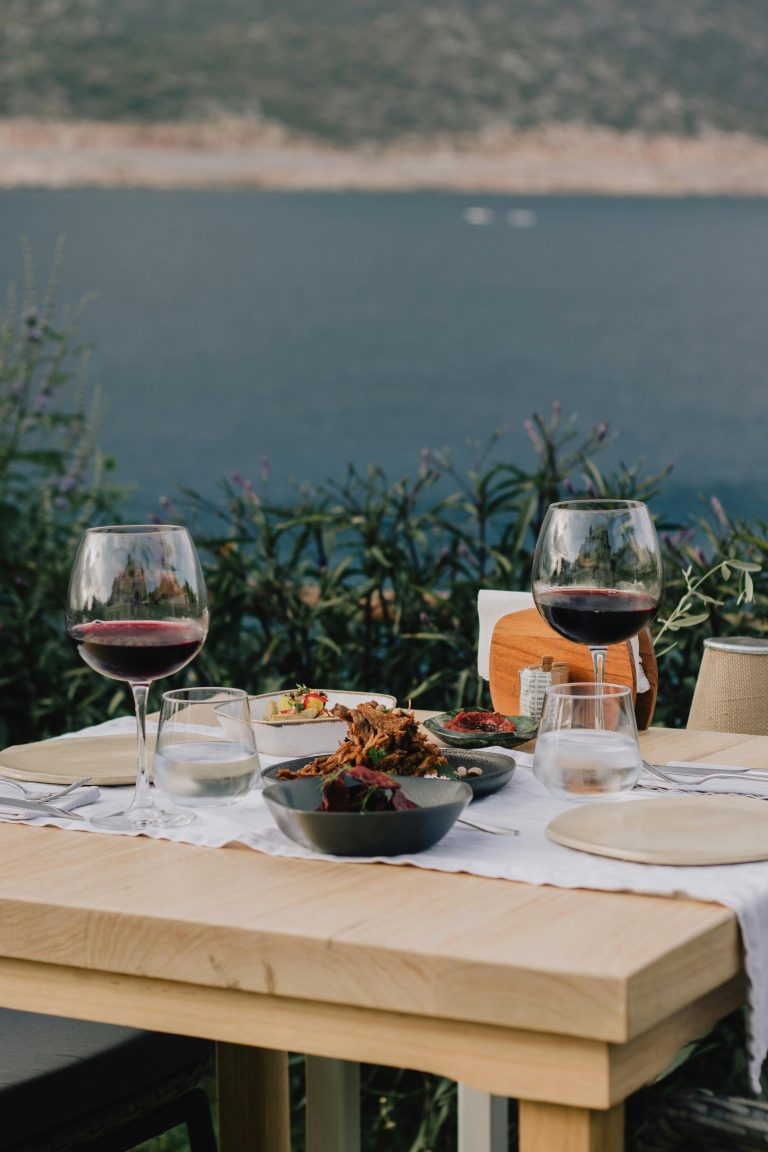Whether you’re a serious wine fundi or a budding aficionado, an at-home wine tasting is a stellar social and interactive choice for a memorable get-together. Follow our step-by -step guide to getting yours just right and file
away some top tips.
Choose a Theme
If you are the host, decide on your theme before you send out your invitations. Examples of theme options include: varietals, regions, specific vintage, budget or award winners.
Bring a Bottle or Supplied by The Host?
As with any home-based event, it depends on the format and the crowd. If you’re hosting a special event such as a birthday, it could be a real spoil for your guests if you supply all the wines. That said, if your guests are keen wine collectors and tasters who are always on the hunt for something new, then a challenge to bring a bottle within a certain category (for example, ‘bring your favourite red under R150’) can up the entertainment factor.
Taste and Learn Versus Share Your Knowledge?
There are many levels to a wine tasting social. More amateur fundis might prefer an opportunity to add to their wine wisdom which means a sommelier, guest winemaker or wine merchant might be a good person to approach to present at your party. Perhaps the more experienced palates would relish the opportunity to test their knowledge and noses with a blind tasting? It all comes down to reading your crowd.
Map Out Your Menu
The varietals and format of your evenings (and your crowd of course) are key to your choice of foods to serve. Serving up a blind tasting of sub R100 whites? Grazing platters of meats, cheeses and savoury nibbles create a convivial atmosphere (a grazing box is even better for a successful socially distanced event). Hosting a formal
blind tasting of some heavy-hitting Cabernets? A robust menu of more complex dishes (maybe something meaty?) will complement your choices. Small bites are an excellent option if you are tasting across the varietal spectrum – especially good if you are wanting to explore how certain wines enhance particular food flavours and vice versa.
Number of Guests
Wine tastings are fun but they can get rowdy – especially if there are multiple opinions in the room. Most wine-club experts and tasting hosts agree that ten people is a comfortable enough number – good for keeping things social and the conversation flowing but manageable so that it’s possible to run through the wine while holding your guests’ attention.
Set the Scene
A wine tasting experience is a special affair and even if you do decide to keep things casual, having everybody seated in one area can help your event run smoothly. The more serious wine experts might insist on notable decor fripperies, a white cloth as well as the correct glassware for each wine. Rule of thumb – a flight of six wines is always a comfortable number.
PS: Set the table first and set out the relevant wine glasses in order of tasting.
Learning Materials
Serious wine notes may make newbies feel intimidated but they can be really helpful in identifying key FAQs. They also help prevent a wine tasting get-together descending into a long Q & A session (all the information such as region, vintage, notes should be scannable). For a taste-and-learn session, leave space for notes where guests can express challenges such as identifying flavours via the nose and mouth or how food affects their experience.
Blind Tasting or Tasting Flight?
If you are hosting a wine tasting party where attendees have varying degrees of interest in wine, perhaps save a professional blind tasting for another (smaller) event. We’re all a little socially starved after multiple lockdowns, so the chances of chatty friends being focused is better with a varied tasting offering.
Home wine tasting hacks
• Make sure you have plenty of water (and spittoons if you think guests would appreciate them).
• Don’t use scented candles or flowers that might interfere with wine aromas.
• Check optimal temperatures for your wines and chill what needs to be chilled.
• Focus on small pours rather than full glasses of wine.
• Don’t wait for guests to arrive before opening wine – younger red wines need one or two hours to aerate optimally.
• Create an Instagram hashtag for your event to record your memories and wine notes.
ALSO SEE: Mussels in a creamy white wine garlic sauce
Written by Vicki Sleet for Food&Home November 2021.
Feature image: Pexels

